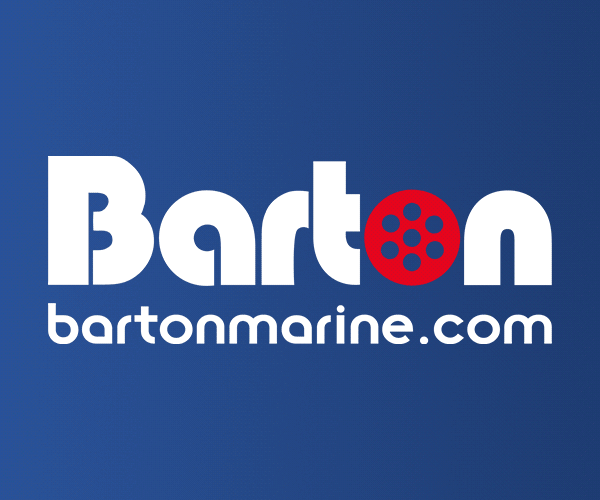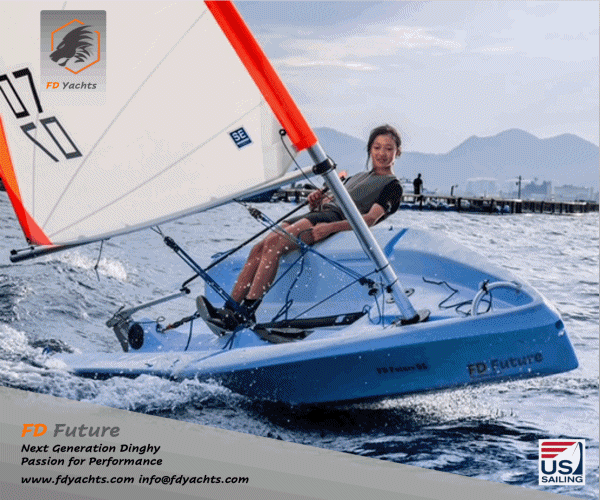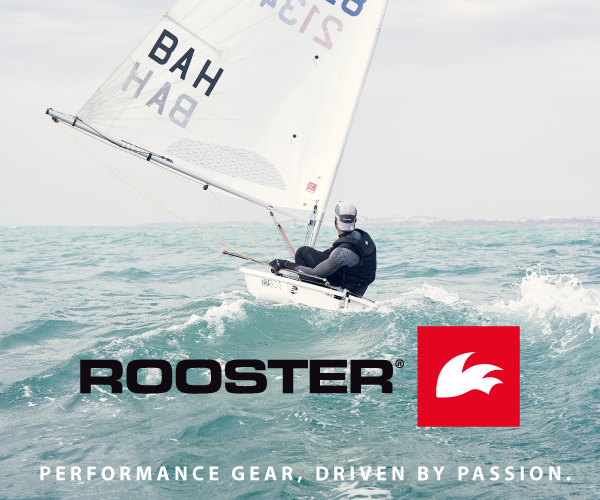












Boats for sale
| Rossiter Pintail Mortagne sur Gironde, near Bordeaux |
 |
| Laser 28 - Excellent example of this great design Hamble le rice |
 |
| Laser 140101 Tynemouth |
 |
List classes of boat for sale |
Windward Mark to Starboard |
Post Reply 
|
| Author | |
Rupert 
Really should get out more 
Joined: 11 Aug 04 Location: Whitefriars sc Online Status: Offline Posts: 8956 |
 Post Options Post Options
 Quote Quote  Reply Reply
 Topic: Windward Mark to Starboard Topic: Windward Mark to StarboardPosted: 01 Jun 15 at 3:17pm |
A protest is all very well, but usually it is quicker round the course to say something to a boat which is just about to get slap bang in the way than it is to crash into them or crash gybe out of the way. If they choose to ignore you, then you can protest if you deem it necessary. |
|
|
Firefly 2324, Puffin 229, Minisail 3446 Mirror 70686
|
|
 |
|
Brass 
Really should get out more 
Joined: 24 Mar 08 Location: Australia Online Status: Offline Posts: 1151 |
 Post Options Post Options
 Quote Quote  Reply Reply
 Posted: 01 Jun 15 at 12:45pm Posted: 01 Jun 15 at 12:45pm |
|
|
 |
|
ohFFsake 
Far too distracted from work 
Joined: 04 Sep 08 Location: United Kingdom Online Status: Offline Posts: 219 |
 Post Options Post Options
 Quote Quote  Reply Reply
 Posted: 01 Jun 15 at 12:30pm Posted: 01 Jun 15 at 12:30pm |
|
Jim,
Neither boat is an assy - max VMG for either of them would be to gybe immediately onto starboard and broad reach straight to the mark (which is what happened next). Not sure what you are uncomfortable with - doesn't 17.1 explicitly prohibit ROW boat from sailing above her proper course? To put it another way, if B sticks her nose below A, just how high can she go, given that to all intents and purposes they are both now sailing away from the next mark...! |
|
 |
|
JimC 
Really should get out more 

Joined: 17 May 04 Location: United Kingdom Online Status: Offline Posts: 6662 |
 Post Options Post Options
 Quote Quote  Reply Reply
 Posted: 01 Jun 15 at 12:03pm Posted: 01 Jun 15 at 12:03pm |
Trouble is a dead run is not going to be a proper course for the vast majority of boats. Almost everything has a better VMG a greater or lesser number of degrees off, so I think you're in very shakey ground saying someone needs to be on a dead run. The other thing that worries me about your phrasing for that is that you seem to be getting close to suggesting that L as a ROW boat is required to sail a proper course, which I'm uncomfortable with. I can't see anything in rules or casebook directly on this, but my feeling is, if two boats were to meet like this in the middle of a running leg I would think it reasonable that L could take W past the normal point when L would gybe for the mark without being accused of sailing above her proper course, it would be reasonable for L to continue on a max VMG course. If that is indeed the case then I would think the same applies in your situation if RRS18 doesn't apply. But I could easily be wrong. |
|
 |
|
ohFFsake 
Far too distracted from work 
Joined: 04 Sep 08 Location: United Kingdom Online Status: Offline Posts: 219 |
 Post Options Post Options
 Quote Quote  Reply Reply
 Posted: 01 Jun 15 at 11:55am Posted: 01 Jun 15 at 11:55am |
|
You are not obliged to say anything at all.
In fact, it could be argued that whether or not the other boat has room to complete their manoeuvre is really for them to judge, not you  I would stick to remembering to say "Protest!"when they infringe...
Edited by ohFFsake - 01 Jun 15 at 12:07pm |
|
 |
|
Rupert 
Really should get out more 
Joined: 11 Aug 04 Location: Whitefriars sc Online Status: Offline Posts: 8956 |
 Post Options Post Options
 Quote Quote  Reply Reply
 Posted: 01 Jun 15 at 11:47am Posted: 01 Jun 15 at 11:47am |
|
Interesting stuff, thank you.
One slightly silly related question. If telling someone they can't tack/gybe in my water is very 1960s, what should I say to prevent someone from doing it, in language that will both be understood by the other boat and hold up in a protest? |
|
|
Firefly 2324, Puffin 229, Minisail 3446 Mirror 70686
|
|
 |
|
ohFFsake 
Far too distracted from work 
Joined: 04 Sep 08 Location: United Kingdom Online Status: Offline Posts: 219 |
 Post Options Post Options
 Quote Quote  Reply Reply
 Posted: 01 Jun 15 at 11:08am Posted: 01 Jun 15 at 11:08am |
|
Thanks so much for the excellent breakdown, as ever. Untangling a seemingly complex manoeuvre into a discrete series of steps makes everything far easier to understand.
To clarify a few points arising: 1. Neither boat hailed protest so end of story in terms of taking it any further. My reason for posting was just to clarify the rights and wrongs to further our own future knowledge. 2. A was a keelboat, B was a slower dinghy, but with a tighter turning circle. 3. In the absence of any other boats, A's course to the next mark would have been an immediate gybe-set. (Symmetric kite was already rigged for a starboard tack hoist) It is doubtful whether B did gain an overlap below A when both both boats were still on port tack. If she did it was only briefly as A was travelling faster. But giving B the benefit of the doubt and assuming that they did obtain an overlap, then to my mind either: (a) if both boats are still in the process of rounding the mark, B may be able to claim room as A tacked within the zone (same rule that granted A room moments earlier). However, as the proper course to the next mark requires a gybe, B is obliged to do so at the earliest opportunity. or (b) If both boats are deemed to have completed the mark rounding and are now sailing in open water, then if B gains an overlap to leeward she must not sail above her proper course to the next mark. Given that the proper course is actually on the opposite gybe, surely she is (at least) obliged to sail no higher than a dead run. So given that A is turning more slowly, she should be able to bear off onto a dead run without infringing.
|
|
 |
|
Brass 
Really should get out more 
Joined: 24 Mar 08 Location: Australia Online Status: Offline Posts: 1151 |
 Post Options Post Options
 Quote Quote  Reply Reply
 Posted: 01 Jun 15 at 2:23am Posted: 01 Jun 15 at 2:23am |
|
|
 |
|
ohFFsake 
Far too distracted from work 
Joined: 04 Sep 08 Location: United Kingdom Online Status: Offline Posts: 219 |
 Post Options Post Options
 Quote Quote  Reply Reply
 Posted: 01 Jun 15 at 12:11am Posted: 01 Jun 15 at 12:11am |
|
Windward mark to be left to starboard. Course to next mark is a run. A is approaching the windward mark on Starboard tack at the same time as B approaches on port. A cannot tack for the mark without impeding B, so instead elects to remain on starboard, forcing B to tack away. As soon as B passes head to wind, A tacks to round the mark. B immediately tacks back again and makes contact with A whilst A is still completing her tack. After her tack is complete A continues to bear away onto a run and gybes onto starboard which is her proper course to sail directly to the next mark. As she does so, B bears away very tightly inside A, initially gaining an overlap to leeward whilst both boats are on port tack. After A gybes onto starboard B has to alter course quickly to avoid contact and hails A requesting she do turns, as she had no right to gybe in B's water. Questions: 1. My view is that the initial contact was a simple case of simultaneous tacking so B was in the wrong. But does rule 18 affect this in any way? 2. As B tacked within the zone whilst A was overlapped inside her, I believe she is then obliged to grant A mark room (rule 18). Does this extend to allowing A room to gybe if that is her proper course to the next mark? In other words, at what point does rule 18 switch back off? 3. If the answer to B is no, then my understanding is that A's gybe from port to starboard gives her right of way subject to initially allowing B room and opportunity to keep clear. In this instance, does the simple fact that B was able to avoid A demonstrate that A complied with this requirement?
|
|
 |
|
Post Reply 
|
| Forum Jump | Forum Permissions  You cannot post new topics in this forum You cannot reply to topics in this forum You cannot delete your posts in this forum You cannot edit your posts in this forum You cannot create polls in this forum You cannot vote in polls in this forum |
Bulletin Board Software by Web Wiz Forums® version 9.665y
Copyright ©2001-2010 Web Wiz
Change your personal settings, or read our privacy policy
Copyright ©2001-2010 Web Wiz
Change your personal settings, or read our privacy policy












 Printable Version
Printable Version Delicious
Delicious Digg
Digg Facebook
Facebook Furl
Furl Google
Google MySpace
MySpace Newsvine
Newsvine reddit
reddit StumbleUpon
StumbleUpon Twitter
Twitter Windows Live
Windows Live Yahoo Bookmarks
Yahoo Bookmarks Topic Options
Topic Options